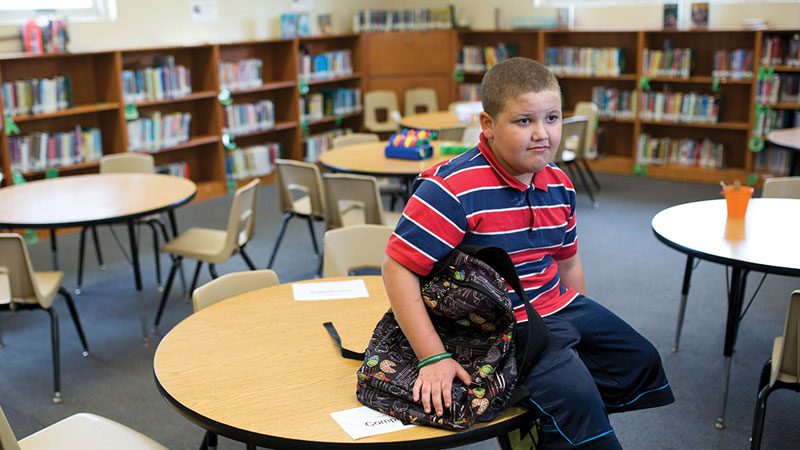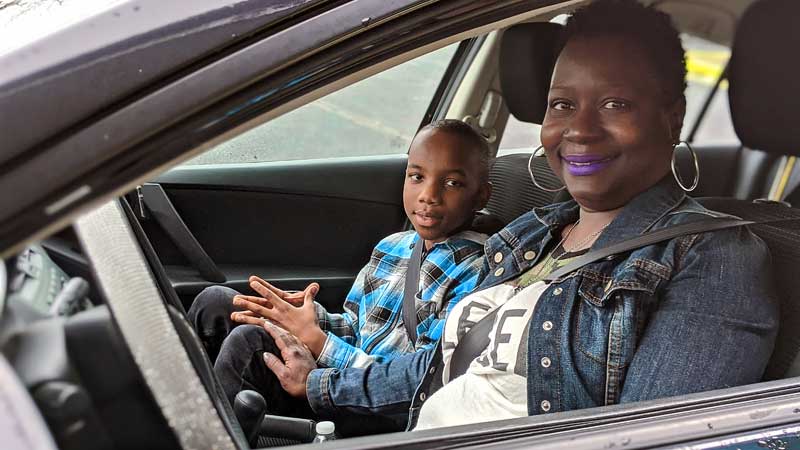The Challenges of Child Hunger

At the Maryland Food Bank, we want to understand every nuance of how hunger impacts our communities, so we can respond effectively. And we know our youngest neighbors do not face the same challenges as adults or older adults and require us to create and apply different solutions.
We regularly hear stories about how families are trying to get good, nutritious food for their children. Beyond anecdotes, those stories are supported by data sourced by our Learning, Measurement & Evaluation team that help us understand the broad impacts of childhood hunger and craft more impactful solutions.
Parental Point of View: A Three-Year Roller Coaster
The U.S. Census, United Way, and the American Farm Bureau have been tracking child hunger in Maryland through different data points, all of which offer facts about child hunger in Maryland.
Since 2022, the U.S. Census has been assessing child hunger through the parental lens, asking adults “have your children been in a situation where they are not eating enough because food was not affordable?”
And the distinction of asking about their children versus themselves is an important one.
For years, we’ve heard from neighbors all across the state that they skip meals to make sure that their kids have enough to eat, but this study gave us our first real insights into situations where children were meeting the literal definition of food insecurity not having access to sufficient food, or food of an adequate quality, to meet one’s basic needs.
In early 2022, nearly 1 in 3 (31.8 percent) of adults said that their children were sometimes or often not eating enough because food was not affordable. Those responses were then backed up by the fact that the average household was forced to spend $445 more each month to buy the same goods and services compared to the previous year (Moody’s Analytics).
The pandemic ratcheted that number up to 34.7 percent, and the monthly budget needed just to account for a family’s basic nutritional needs jumped to $1,526 (United Way of Central Maryland).
While inflation may have eased in 2024, the percentage of parents reporting their kids were sometimes or often NOT eating enough only went back down to 2022 levels (31.8 percent).
And during the holiday season—one of the most challenging times of the year for children and families facing food insecurity—the average cost of a Thanksgiving meal remained nearly 20 percent higher than in 2019, according to the American Farm Bureau Federation.

How Hunger Hurts Children
Research is clear about the negative effects of food insecurity on the development of children physically, mentally, and in the classroom.
Physical
An NIH study found that in the first 1,000 days of a child’s life, nutritional deficiencies, like a lack of iron, can change the physical structure of the brain. Children who lack enough nourishment often fall behind their peers in terms of height, weight, and overall physical ability.
These studies continue to show that hunger in childhood sets the stage for a host of health challenges as they grow up. A 2024 study found that food-insecure children are more likely to face reduced immune system functioning; experience more communicable diseases; have poor body weight outcomes; have to manage asthma; have higher rates of emergency room visits and health care use; and more often internalize behavior problems, such as anxiety and depression.
Mental
A different NIH study, which focused on the mental health of more than 200,000 parents and children found a relationship between food insecurity and symptoms of depression, anxiety, externalizing and internalizing behaviors (directing problematic energy outward and towards oneself, respectively), hyperactivity, and stress.
While the study identified the largest single correlation between food insecurity and depression in children ages 2-17 overall, it highlighted a vicious cycle, where food insecurity before age 5 was associated with depressive symptoms that lasted throughout childhood and that depression in adolescence strongly correlated to food insecurity in adulthood.
Academic
Children experiencing hunger are more likely to struggle in the classroom as well, and teachers are uniquely positioned to provide a unique window into how hunger can affect a child’s classroom performance. No Kid Hungry surveyed local educators, offering some stunning results: 80% observed the negative impact of hunger on concentration; 76% saw decreased academic performance; 62% saw behavioral issues increased; and 47% noticed children getting sick more often.

The Particular Challenges of Adolescent Hunger
During a recent episode of Public Health on Call, Kristin Mmari, DrPH, MA, Associate Professor, Bloomberg School of Health described some of the eye-opening results of a Johns Hopkins study looking into how hard hunger hits adolescents, especially children aged 14-18.
“In fact, just in our small sample, 53% were food insecure. And a third of those were severely food insecure,” she said. “It’s something adolescents don’t like to discuss; many adolescents said that admitting that they’re hungry or food insecure is almost the worst thing that they can admit,” she continued.
And some of the children she interviewed shared heartbreaking experiences trying to self-manage hunger. In all six of the neighborhoods, girls “described having to engage in transactional sex to get money to pay for food,” while boys “meanwhile, would engage in basically ‘anything,’ as they said. If you think of the ‘squeegee kids’ a lot of them mentioned doing that to get money for food. They said that was easier than going to places like food pantries, where they were often judged, and people didn’t seem to want them there.”

Your Support Means We Can Be There for Children and Families
We know that reaching children and families takes different strategies and have created thoughtful programs and partnerships like School and Higher Education Pantries, Summer and Supper Clubs and Pantry On The Go.
We’re also innovating new initiatives like Mobile Markets and our Educational Garden which bring children, families, and food closer than ever.
But we know we can’t do it alone. That’s why we also advocate for other ways to ensure children are getting fed, like free and reduced-price meals in schools, and are grateful for Maryland’s individuals, businesses, foundations, and organizations that support our shared vision for a state where families don’t have to struggle with child hunger. ![]()

About The Author
Ben Gross
For more than 30 years, Ben has been helping organizations raise awareness and inspire action by creating compelling narratives. And since 2018, Ben has been the Maryland Food Bank's Staff Writer, elevating the voices of food-insecure neighbors to further the Maryland Food Bank's mission of feeding people, strengthening communities, and ending hunger for more Marylanders.
We Need Your Help
Programs, campaigns, and educational outreach at the Maryland Food Bank has always relied on the philanthropic support of charitable individuals like you.
Much like our food distribution efforts, outreach activities at the Maryland Food Bank rely on generous donations of money and time.
We hope you’ll consider a contribution.







